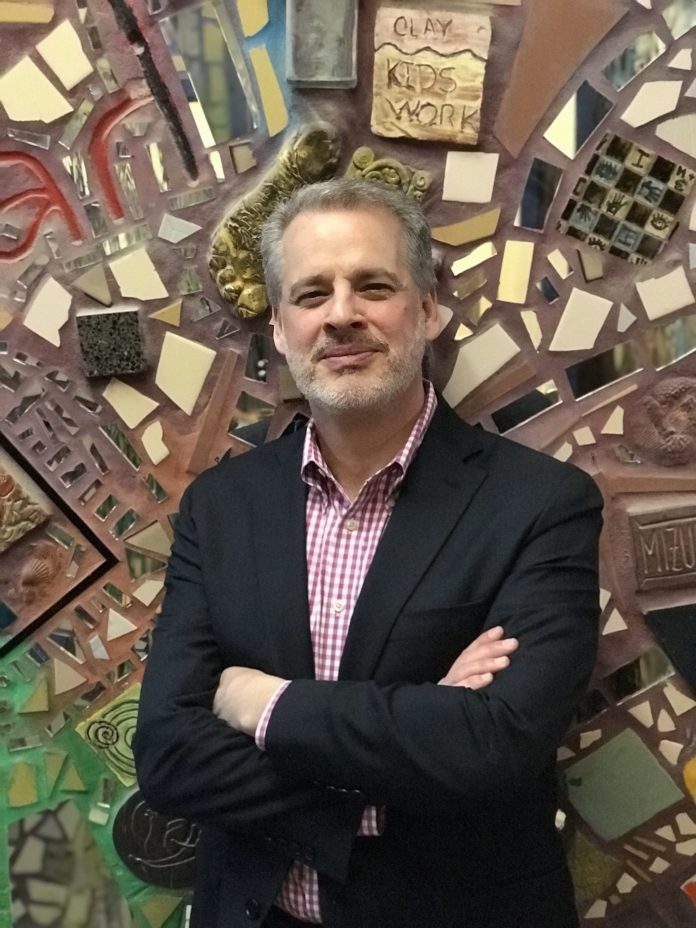Whether you’re in the silver year of marriage or freshly dating, Valentine’s Day has a tendency to put pressure on folks. There are cards to buy, presents to wrap and dinner reservations to secure, all in an effort to show another person that your heart belongs to them.
The heart is an interesting organ, one that’s regularly used to symbolize love and affection. It would be simply weird for Hallmark to sell kidney- or brain-shaped items, or cards that read, “My liver belongs to you.” But how did this particular organ come to hold such a status?
Dr. Vincent Figueredo, a cardiologist at St. Mary Medical Center, answers such questions in his debut book The Curious History of the Heart: A Cultural and Scientific Journey, which explores the role and significance of the heart in art, culture, religion, philosophy and science from the dawn of civilization to present day.
An entire chapter is dedicated to Valentine’s Day, including its history and how it became the commercial holiday that we know today.
“Obviously, no tradition is more closely associated with the heart. Its origins are unclear, but they believe a priest named Valentine of Rome was put to death on Feb. 14 in 269 C.E. He was illegally conducting Christian marriages, and that was against the law according to Claudius Caesar,” said Figueredo.
In the fifth century, to commemorate St. Valentine, Pope Gelasius I named Feb. 14 St. Valentine’s Day. However, the first reference to the idea of this day being one for lovers didn’t come until Geoffrey Chaucer wrote the poem “Parliament of Fowls” in 1381.
As for the distribution of cards, this didn’t start until about 100 years later.
“The first known Valentine to be sent was actually by Charles, Duke of Orléans, in 1415. He was captured at the Battle of Agincourt and put into the Tower of London,” said Figueredo. “And he sent a message to his wife, where he said, ‘I am already sick of love, my very gentle Valentine.’ ”
Unfortunately, Charles remained trapped in the tower for 25 years and, by the time he was released, his wife had passed away.
Throughout the 17th century, said Figueredo, St. Valentine’s Day was largely celebrated by the affluent in England, where men would place a gift outside the door of their woman of interest.
Commercial cards started popping up in the 18th century, featuring hearts, cupids, flowers and other symbols seen today. By the end of the Industrial Revolution in 1840, these cards were being mass produced, allowing them to become affordable to the average person.
The Valentine’s Day craze only continued to grow from there, with $21 billion spent on the holiday in 2020. That year, a billion cards were mailed globally, most of which likely had hearts emblazoned on them.

For Figueredo, the topic of the heart, from both a scientific and cultural perspective, is near and dear to his, well, heart.
“I have spent most of my life taking care of and studying hearts. At the same time, back in college, to round out my pre-med courses, I was fascinated by history, art history and religion courses,” he said. “I started collecting curious heart facts probably about 25 years ago, and five years ago I decided to put it into a book and write a history on a single subject, which was the heart.”
In addition to Valentine’s Day, The Curious History of the Heart covers an array of topics, such as the phenomenon of a “broken heart” and the emerging field of neurocardiology, which has found evidence of a “heart-brain connection” in mental and physical health.
Figueredo stressed that the 312-page book is not geared toward fellow medical professionals. Rather, it’s for anyone who’s interested in the subject.
“It’s a book for everyone, and it’s an all-encompassing travel through time on how belief as to what the heart was evolved while humans were trying to figure out what life forces it contained,” said Figueredo. “For thousands of years, it was the home of the soul and our memories and our intellect, and it was where we connected with God.”
The Curious History of the Heart is currently available through Columbia University Press, and will be available March 24 via Amazon and other sellers.
Samantha Bambino can be reached at [email protected]


